Banjara Diaries – Part 5
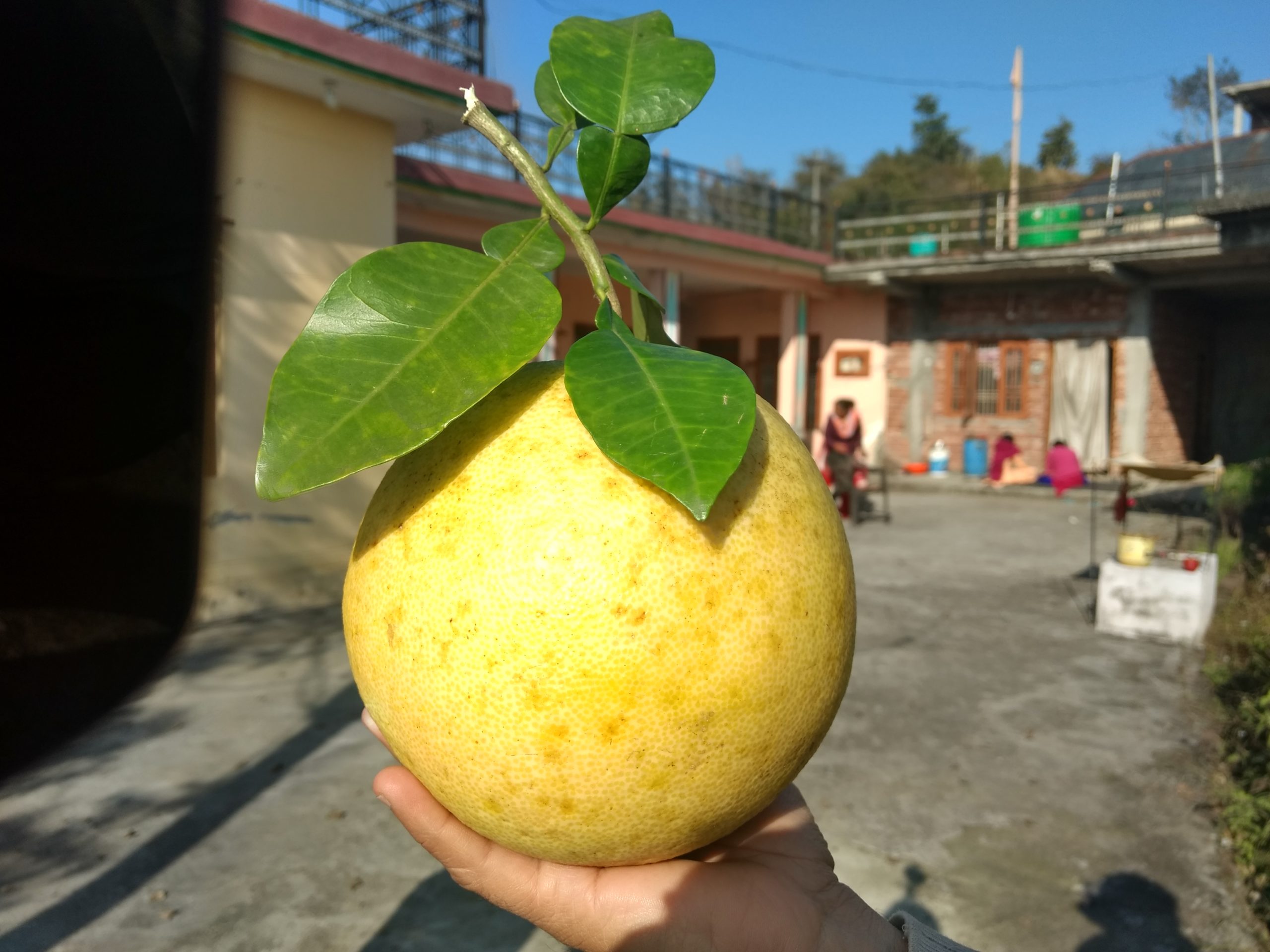
Today, the Banjara was in for a one of the most cherished memory of life thanks to a fruit.
Post breakfast we started for the highest level cricket ground located in India.
Batting with a View
Till now, I had seen it only during the cricket matches and wondered how could the teams play there with one of the most beautiful views in the background.
The moment I stepped on the premises; I knew I had to video call my parents. It just didn’t seem right to enjoy the view all by ourselves. Maa and Baba were happy too, to get a glimpse of the mighty Dhauladhars and the cricket ground amidst it.


Rock-Cut Temples
Next we drove to the Masroor Temples. The temples were carved out of monolithic rock . The entire complex is symmetrically laid out on a square grid, where the main temple is surrounded by smaller temples. They reminded me of the rock cut temples in Mahabalipuram. The temples are from the first half of the 8th century. Observe the beautiful carvings on the rock. We could count a total of 12 temples. During the 1905 Kangra Earthquake these temples got damaged. Some parts of them have been stored in some caves above the temples for restoration.
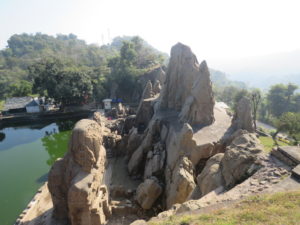


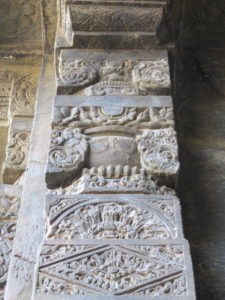
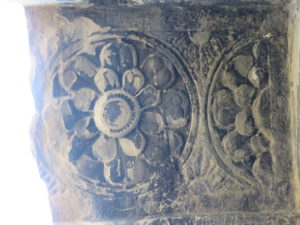
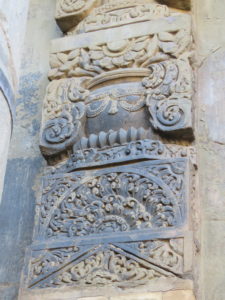
A Citrus Mystery
Nearby the caves we noticed a tree with big fruits laden on it. The smell of the leaves was citrusy. Upon inquiring with the security lady, she informed that these fruits were part of the citrus family and local to Himachal. No one sold them commercially since they oxide fast once cut. The name “Chingotra”. She said we could only get to taste them at someone’s home since most locals have these trees planted at home. We started for our next site seeing location thinking we might never get to taste this one. But we were to experience the Pahadi hospitality soon.
At one location, our driver stopped the car, showing us a tree loaded with Chingotras. We approached the house near the tree, hoping the owner would help us identify a way to approach the tree. Little did we know, it was his garden. With smiles Mr. Gurbachan Singh and his family welcomed us all in their home. They not just showed us the tree and the fruit, but also cut few open for us and served it in their traditional style. Traditionally the fruit is peeled and the slices peeled to get the flesh out. A coarse paste of mint, coriander, chilly, lemon is prepared and mixed with the flesh part topped with some black salt. It was a refreshing treat to savor the fruit over a warm conversation with the family. They were happy to see us interested in local cuisine and wished us well for our onward journey.
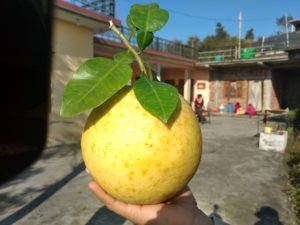

It was late in evening by the time we reached our last destination for the day.
Trigata Kingdom

Legend has it that there was a time when Goddess Ambika was fighting a ferocious demon. During the battle, a drop of the goddess’s sweat fell on Earth. From this emerged Bhumi Chand of the Chandravansh, who helped the goddess fight the demon. As a blessing, Ambika granted him the kingdom of Trigarta, located between the three rivers – Sutlej, Beas and Ravi. Kangra is a part of this region.

Katoch Dynasty
The fort was built by the Rajput family of Kangra State, the Katoch dynasty. The fort stands on a steep rock above the valley at the confluence (places where two rivers meet) of Banganga and Majhi rivers. It is said that Kangra belongs to one who owns the fort. At the entrance of the fort, there are audio guides available with the voice of Roshan Seth to take a walk through the history of the fort. I highly recommend visiting the fort using these audio guides. They give a detailed description of the history of Kangra fort from the Mahabharat era to the last king Raja Sansar Chand. As the audio tape starts one gets to hear the story how the Rajput family received the Kangra region.
Fort History
Subsequently one is taken through the history of how the fort was built Maharaja Susharma Chandra after the Mahabharata battle, and the subsequent attempts to control it by Alexander the Great, Mahmud Ghazni, Jahangir, Maharaja Ranjit and the British. The in depth description of the multiple plundering done by Mohamed of Ghazni, looting of the treasure wells, the 14 months siege of Kangra and fall to Jahangir, the subsequent recovery of fort by Maharaja Sansar Chand, the alliance between him and Maharaja Ranjit Singh during the Sikh- Gorkha wars, the subsequent handing of the fort to British for a few villages in the Kangra Valley is thrilling to listen to as one proceeds through some of the strategically significant gates and areas of the fort.
Fort Architecture
he fort is built in seven levels with the gate at each level strategically placed to ensure the fort is impenetrable. A large courtyard had temples of Laxmi Narayan, Ambika Devi and Jain temple with idol of Mahavir. A level up one could spot the brilliant carvings of the temples and the 21 treasure wells now empty and in ruins. The centuries old peepal tree in the courtyard must have been a witness to multiple events over history.

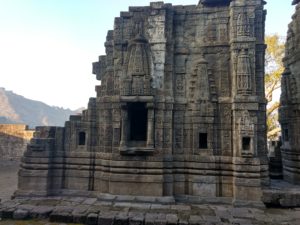
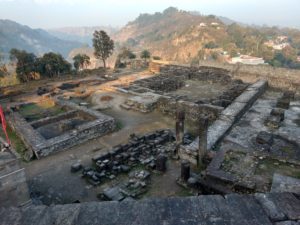
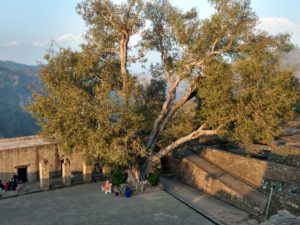
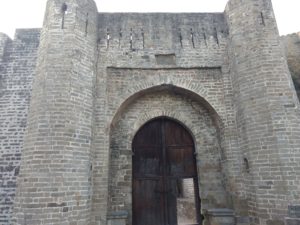

View from the Fort
At the top most level, one can view the Dhauladhar range at one end and the Kangra Valleys with the river confluence at other. The robust and rustic fort that once withstood the attacks over centuries, finally fell down to nature during the 1905 earthquake. I recalled a sentence I had heard as a kid, “Khandahar ye batate hain, ek samay ki baat hai jab killa buland tha” meaning the ruins are proving that there were times when the fort was impenetrable.


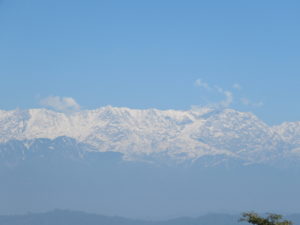
It was an amazing walk through the history which we weren’t aware about earlier. A visit to the Chamunda Devi temple nearby the fort we started back for MacLeodGanj.
Cafes of MacLeodGanj
For Dinner , we went to the Snow Lion Cafe at MacLeodGanj where we had Nepalese Thali, Thukpa and a Chocolate cake.


The Banjara had a perfect day
Click below for the MacLeodGanj Markets, Gopalpur Zoo and another walk in history.
